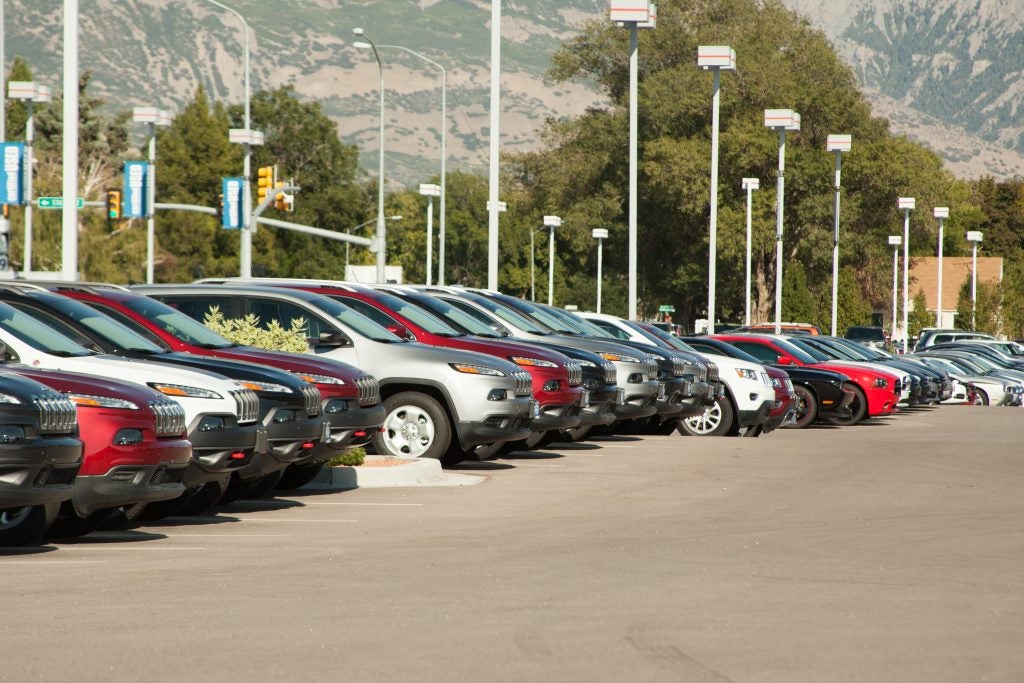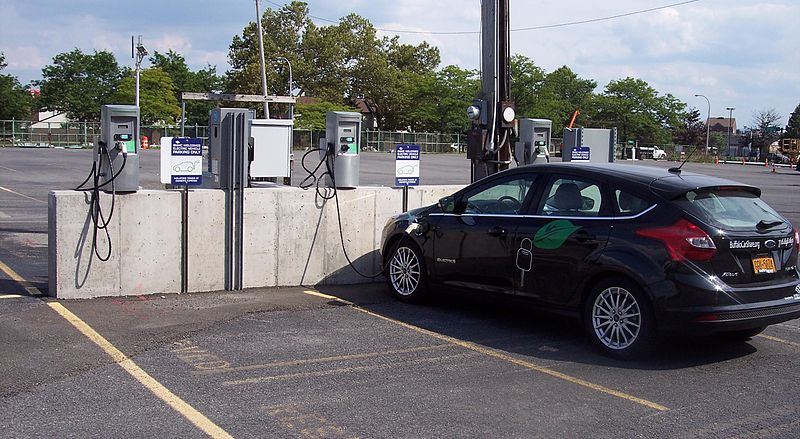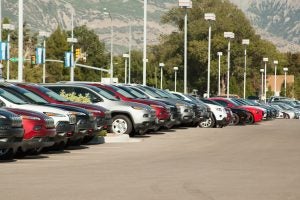(EDF Legal Fellow Erin Murphy co-authored this post)
America’s clean cars standards are one of our biggest climate success stories.
We’ve made major strides in reducing greenhouse gas pollution since protective standards were put in place in 2012 – spurring fuel efficiency gains at the same time.
New innovations have made additional progress even more clearly achievable – and have set the stage for a future free from tailpipe pollution.
Yet, when it comes to cars, the Trump administration is stuck in reverse.
President Trump is reportedly considering a dramatic rollback of our existing clean cars standards. Right now, an EPA action to set this reversal in motion is under White House review.
Ford broke ranks earlier this week, publicly disavowing a rollback of these climate pollution protections.
Yet it’s rumored that EPA Administrator Scott Pruitt will issue a decision as early as Friday that would set in motion a potentially dramatic weakening of these safeguards. It’s time for policy-makers and automakers like GM, Chrysler, Honda and Toyota to take a stand and reject these baseless attacks.
Here’s what you need to know:
- Climate progress in the balance
Tremendous climate progress is at stake.
EPA estimated that the clean cars program would reduce climate pollution by six billion tons over its lifetime and cut other dangerous air pollutants as well. That’s how much climate pollution America emits in a year, from all sources and all sectors.
The American Lung Association and twelve other public health organizations have all underscored the importance of maintaining protective clean cars standards.
The transportation sector has become America’s largest contributor of climate pollution. It is also a significant source of harmful soot and smog-causing pollution.
Now is the time to accelerate reductions from this sector, not stall out. Yet leaked details suggest the Trump administration is moving to significantly weaken upcoming standards for cars in model years 2022 to 2025 – eroding the benefits of the standards by almost 60 percent.
- Savings every time you fuel up
Clean cars standards are a win-win – in addition to reducing pollution, they save consumers money at the gas pump.
This program gradually reduces climate pollution rates from cars and trucks – driving five percent reductions each year through flexible fleet-wide standards and spurring comparable year-by-year improvements in fuel efficiency.
Drivers are already benefiting from our existing standards. For example, each Ford F-150 truck bought in 2015 uses about 180 fewer gallons of gas a year than prior models. That saves its owner eight trips to the gas station and up to $700 per year, depending on the price of fuel.
The standards will bring even greater savings in the future. Families that purchase a new car or truck in 2025 will save an estimated $1,650 over the lifetime of that vehicle, compared to a car just three years older.
Over the lifetime of the clean cars program, the savings to American families and businesses will add up to more than a trillion dollars.
The 86 percent of Americans who finance their car with a five-year loan are expected to immediately realize the cost savings from cleaner, more efficient vehicles. This is true even with lower gas prices.
- We have the know-how to exceed these standards
The improvements under the existing clean cars standards are technically feasible and affordable.
Automakers and suppliers are developing and deploying innovative technologies faster than anticipated when the standards were finalized.
EPA, the Department of Transportation, and the California Air Resources Board conducted an exhaustive technical review of the auto industry’s ability to meet the 2022 to 2025 model year standards. They found extensive evidence that the automotive industry can meet those standards at lower costs than predicted when the standards were initially finalized in 2012.
Since the clean cars program began in 2012, there has been roughly a doubling in the number of SUVs that achieve 25 miles per gallon or more, the number of cars that achieve 30 miles per gallon or more, and the number of cars that achieve 40 miles per gallon or more.
Today there are already more than 100 car, SUV, and pickup models on the market that meet standards set for 2020 and beyond.
If any changes are made, the standards should be strengthened.
- Supporting American jobs and innovation now and into the future
Well-designed federal standards foster the deployment of fuel saving solutions.
We have seen this cycle play out over the past several years, as automakers have brought more efficient cars and trucks to market with record sales and strong profitability.
Today, the auto industry directly employs millions of Americans and employment at auto dealerships is at its highest level ever.
Automakers have recognized this strong financial performance in recent annual reports:
- “[Fiat Chrysler] posted another record performance in 2017, achieving ambitious financial targets … We have now reached or exceeded all key financial goals for the first four years of the current five-year plan.” Fiat Chrysler 2017 Annual Report, Chairman’s Letter
- “2016 was the best year in its history of more than 130 years.” Daimler 2016 Annual Report, Chairman’s Letter
- “2016 was a very strong year for General Motors, one that included the launch of dozens of award-winning products around the world, record sales and earnings, substantial return of capital to shareholders and remarkable progress in our drive to define and lead the future of personal mobility. In North America, we achieved record earnings last year and exceeded our 10-percent-margin goal for the second consecutive year.” General Motors 2016 Annual Report, Chairman’s Letter
In a 2016 letter supporting EPA’s proposal to reaffirm the clean cars standards, the United Automobile Workers (UAW) noted:
- “UAW members know firsthand that Corporate Average Fuel Economy (CAFE) and greenhouse gas (GHG) standards have spurred investments in new products that employ tens of thousands of our members.”
Other countries – including China, the world’s largest new vehicle market — are pushing toward a zero-emissions future. U.S. automakers can’t afford to fall behind.
Protective clean car standards spur investment that will preserve and increase automakers’ global competitiveness.
- State leadership at risk
Over the last half century, state leadership has played a key role in spurring the development and deployment of clean car solutions like smog-fighting catalytic converters.
Administrator Pruitt recently made aggressive public statements smearing this success story and suggesting that the Trump administration’s coming attack may even seek to stifle these state-led programs.
Under long-standing provisions in the Clean Air Act, California is authorized to set its own vehicle pollution standards, and all other states have authority to adopt and enforce these standards. Today a third of U.S. new car sales are covered by the coalition of states that have committed to protective clean car standards.
In Ford’s public comments this week, the company recognized this history and committed to working together with California to build a path forward. Yet Administrator Pruitt’s irresponsible comments suggest he is reviewing an existing waiver that allows for implementation of this state success story — and may be considering revoking this waiver, even though such a step has never been taken and has no basis in law.
Pruitt’s comments show a clear disregard for his professed concern for states’ rights.
The takeaway? We need to move forward, not shift into reverse
Unfortunately, it’s no surprise that the Trump administration is set to roll back these protections — just as they’ve relentlessly attacked so many other common sense pollution standards.
EDF will defend the progress we’ve made cleaning up pollution from our cars, and we’ll push for even more progress. We hope all Americans will join us in defense of these crucial safeguards.
- Policymakers at all levels need to stand against these rollbacks and advance clean cars through the myriad of avenues available to them.
- Automakers need to make clear that they stand for common sense standards that spur continued progress on clean vehicles today and continued movement towards a future without tailpipe pollution.
- Individual citizens need to push back against these reckless cuts.
The climate and health protections contained in the clean car standards are critical, well-founded, and eminently achievable. We will be fighting to keep them whole.














